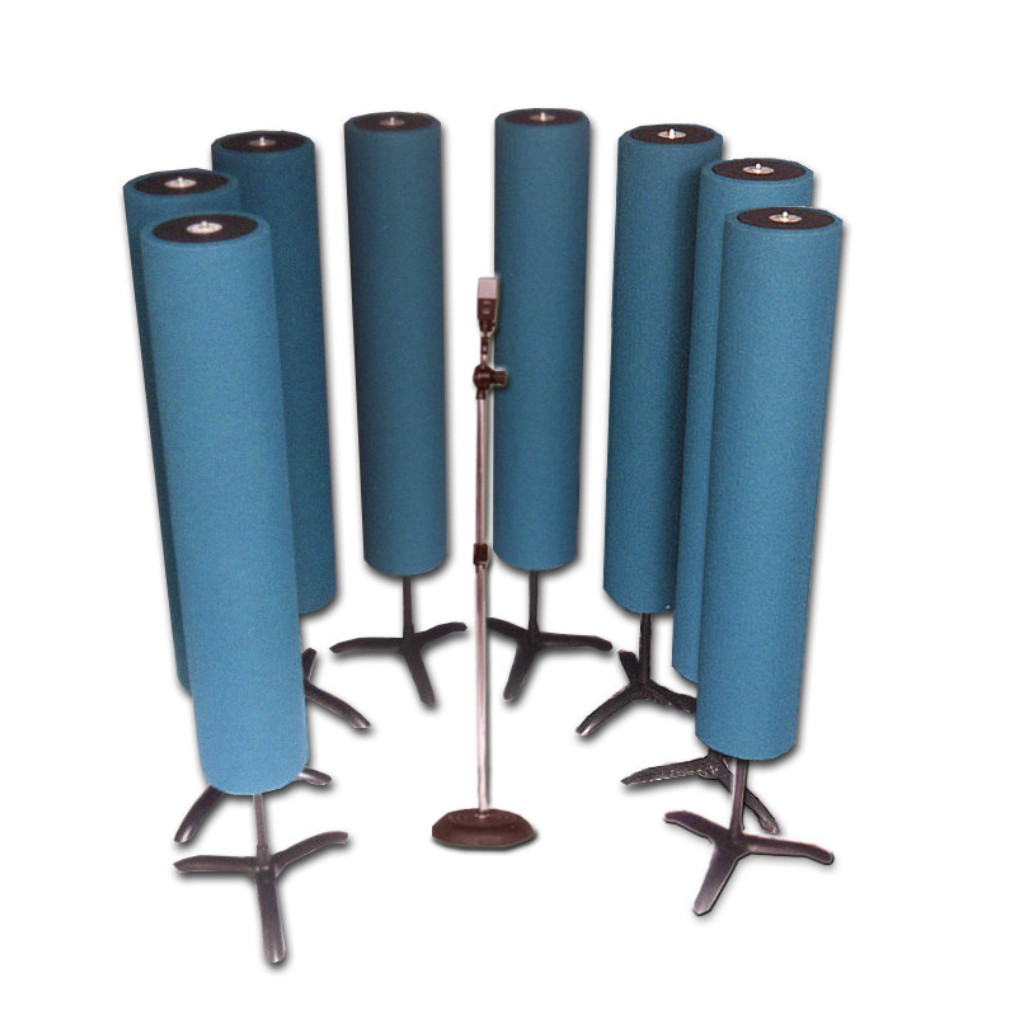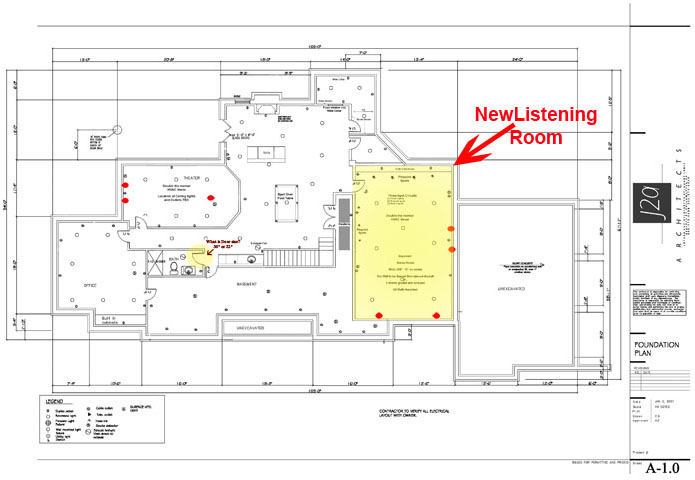by Mike Thornton at production-expert.com
Need Temporary Acoustic Treatment? ASC’s AttackWall May Be Your Answer
Working From Home? The ASC AttackWall has been designed to easily convert any room into a professional sounding studio. In this article, find out how the ASC AttackWall could help you improve the acoustics your temporary home studio without any building work or DIY.
Whether it’s a Starter Kit or a full system, the AttackWall has been designed to take the “room sound” out of the equation to give you a better sounding mixing environment regardless of room or speaker system.
Even better, the AttackWall acoustic environment is freestanding, portable and completely modular, allowing you to “start small” and expand as budget permits. Since it’s freestanding, you won’t need to screw, nail or glue anything to your walls, making it great for renters or temporary spaces. It is so quick and easy to set up that you can take your AttackWall and monitors with you from job to job and know you will have the same mixing environment no matter where you set up. The AttackWall works differently than treating the walls of your room. It has been designed to create its own acoustic environment independent of the room, giving you excellent bass frequency response and crystal-clear stereo imaging.
The AttackWall was developed through a collaboration between ASC founder and acoustic engineer Art Noxon and recording engineer Sam Lynn Halonen and is made up of a combination of StudioTraps and MonitorTraps. StudioTraps are a 9″ diameter tube custom designed so one half of the Studio Trap is treble range reflective and the backside is treble range absorptive, while the entire surface of the StudioTrap is bass range absorptive. The absorbing side of the Traps face the engineer to stop early reflections and the reflecting side of the Traps face the walls of the room to provide a time-delayed diffusive ambience kick. Studio Traps are adjustable in height and are usually set up midway between the floor and ceiling, but they can be raised or lowered for different listening positions or line of sight requirements.
 What Makes the AttackWall Work?
What Makes the AttackWall Work?
The vertical columns of the AttackWall load bass in the same way that the (correctly designed) “Mains” of world-class studios do. StudioTraps are fitted tightly to the sides of the speaker cabinet to create the same effect as professionally designed soffit mounted speakers. This arrangement increases the efficiency of the speaker and projects bass frequencies with a natural (holistic, if you will) effect. Because the StudioTraps are directional, the absorbing side that faces the engineer prevent “horn colouration” from being added to the direct signal. The key component of the AttackWall is technology INSIDE of the ASC TubeTrap.
Art Noxon, owner and chief designer explains what makes this product so different than other products that are available.
 The essential configuration for a complete AttackWall environment involves surrounding the recording console, engineer and speakers with StudioTraps that touch each other allowing no sound to “escape”. This setup controls early reflections and the arrangement offers a significant overall improvement of intelligibility (figure 1). The sound that manages to penetrate the face of the AttackWall is reflected back from the structural wall of the room and is absorbed in the specially designed diffusor side of each StudioTrap.
The essential configuration for a complete AttackWall environment involves surrounding the recording console, engineer and speakers with StudioTraps that touch each other allowing no sound to “escape”. This setup controls early reflections and the arrangement offers a significant overall improvement of intelligibility (figure 1). The sound that manages to penetrate the face of the AttackWall is reflected back from the structural wall of the room and is absorbed in the specially designed diffusor side of each StudioTrap.
By adding additional StudioTraps behind the listening position in a staggered pattern a significant benefit is achieved. These StudioTraps intercept and control reflections from the front and rear wall. With the complete system, you have essentially removed the mix position from the room (figure 2).
Time-Delayed Backfill
In simplified terms, “Time Delayed Backfill” reduces “smear” and adds back a comfortable amount of ambience. Art Noxon, co-developer of the AttackWall System, along with Sam Lynn Halonen, describes it in somewhat technical terms:
“The AttackWall absorbs early reflections and lets other sounds escape to become processed into time-delayed backfill. Without an ambient tail to the ETC (Energy-Time Curve), a reflection-free recording studio would be exhausting to work in. The AttackWall is setup to vent treble in two ways. Some of the sound escapes over the top and under the bottom of the AttackWall. Other frequency components pass through the openings to the side and behind the engineer. Any sound that escapes the AttackWall reflects off the room walls back into the absorbing side of each StudioTrap where it is again back splashed towards the wall. By this process, a time-delayed diffusive backfill of sound bleeds back through the opening in the AttackWall, over the top and under the bottom. The AttackWall creates a LEDE (Live End – Dead End) type mixing environment.” In layman’s terms, the system dissipates the excess energy that would otherwise be described as “smearing” or “muddiness”. The system handles both lateral and vertical diffusion of this unwanted energy”
(figures 3 and 4 below)
Speaker Stands and Vertical Mode Control
Every modern speaker design takes into consideration the complex effects created by the face of the speaker that includes diffusion, distortion and phasing of the sound. Given that every professional speaker design is optimized to account for these physics, the next challenge is to optimize the rest of the environment that impacts your sound.
ASC has specially designed speaker stands that optimize the AttackWall System. The stands can be used on their own but the optimum effect begins with at least the ASC AttackWall Starter Kit.
 The Negative Impact of Phase Cancellation
The Negative Impact of Phase Cancellation
Speaker placement starts with nestling the speaker into a “Monitor Stack”, comprised of specially designed TubeTraps. As an example, if a typical monitor on a stand is located about halfway between the floor and the ceiling. The floor/ceiling bounce returns back to the monitor out of phase, this imposes a phase cancel effect on the speaker’s efficiency. Typically, the first cut is 74 hz for 8′ ceilings, then the engineer boosts 148 Hz in the mix unnecessarily.
 ASC MonitorStacks Correct the Problem
ASC MonitorStacks Correct the Problem
The ASC MonitorStack upsets the vertical symmetry in the room. The lower trap absorbs bass, the upper trap is short of the ceiling and vents bass. The combination eliminates the phase cancel effect and the engineer works in a linear environment
Bass Frequency Control – (aka: Besides an Incredible Listening Environment, Does It “SoundProof”?)
The AttackWall vents and controls bass frequencies above and below the ‘Wall” and the resulting effect is diminishing the unwanted low-frequency energy by more than a 10dB outside of the AttackWall. Within the AttackWall, low-frequency levels (and overall “loudness”) can actually be increased as a result of the dramatically improved energy control that ASC has designed into their proprietary system.
Who Uses The ASC AttackWall?
The AttackWall is trusted by Kevin Olusola, Mick Guzauski, Calvin Harris, Pete Townshend, Skrillex, Deadmau5, Jon Castelli, Stuart White, Bruce Swedien, Dave Kutch, ThankGod4Cody, Morgan Page, Miki Tsutsumi, Jonathan Wales, Gary Lux, Brian Vibberts, and many more.
So How Much Is It?
Check out the ASC Acoustics products on the ASC Webstore.








